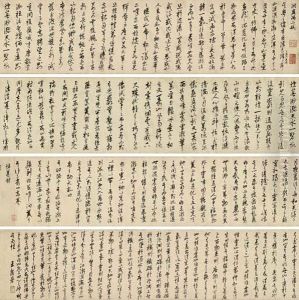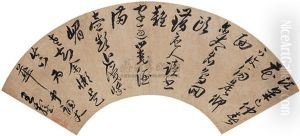Wang Ao Paintings
Wang Ao was a prominent Chinese scholar-official, calligrapher, and painter during the Ming Dynasty. Born into a family with a rich scholarly tradition in 1450, Wang Ao's life was deeply embedded in the cultural and political milieu of his time. He passed the imperial examinations with high honors, distinguishing himself early on and setting the stage for a career that would see him rise to the highest echelons of the Ming Dynasty's bureaucratic apparatus. His intellectual and artistic pursuits were deeply intertwined with his official duties, embodying the Confucian ideal of the scholar-official who was as adept in the arts as in governance.
Over his lifetime, Wang Ao served in various high-ranking positions, including as the Grand Secretary, one of the most powerful and prestigious posts in the imperial bureaucracy. His tenure in office was marked by a commitment to integrity and the welfare of the people, navigating the complex political landscape of the Ming court with a blend of pragmatism and idealism. This period was also characterized by significant civil service reforms and efforts to consolidate imperial power, which Wang Ao was deeply involved in.
As an artist, Wang Ao was renowned for his calligraphy and painting, contributing significantly to the cultural life of the Ming Dynasty. His calligraphic style was celebrated for its elegance and strength, reflecting the broader trends in Ming dynasty calligraphy that favored such qualities. He was also known for his landscape paintings, which were highly valued for their serene beauty and philosophical depth. Through his art, Wang Ao explored themes of nature, the human condition, and the Confucian concept of harmony between humanity and the cosmos.
Wang Ao's legacy is multifaceted, reflecting his contributions to both the political and cultural spheres of the Ming Dynasty. His governance was characterized by a moral integrity and dedication to Confucian principles, which left a lasting impact on the administrative practices of his time. Meanwhile, his artistic achievements have been celebrated in Chinese art history, ensuring his reputation as one of the Ming Dynasty's most distinguished scholar-officials. Wang Ao died in 1524, but his influence persisted, serving as a model for future generations of Chinese intellectuals and artists.




